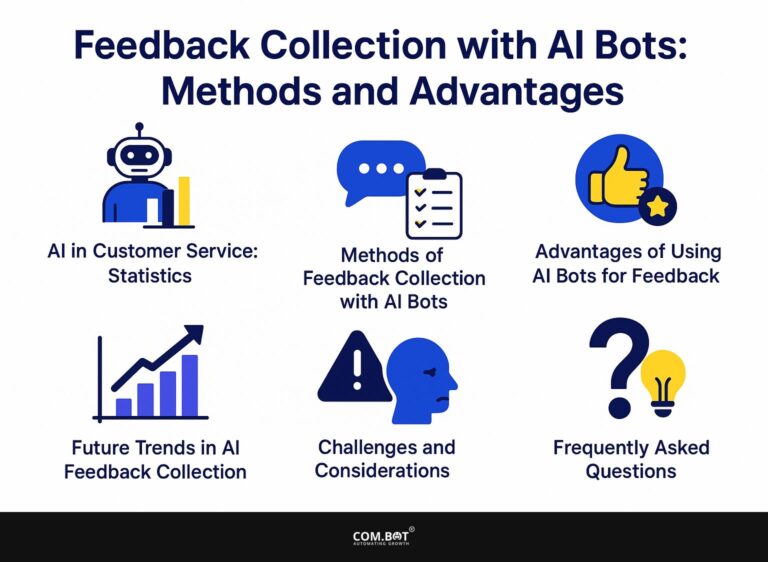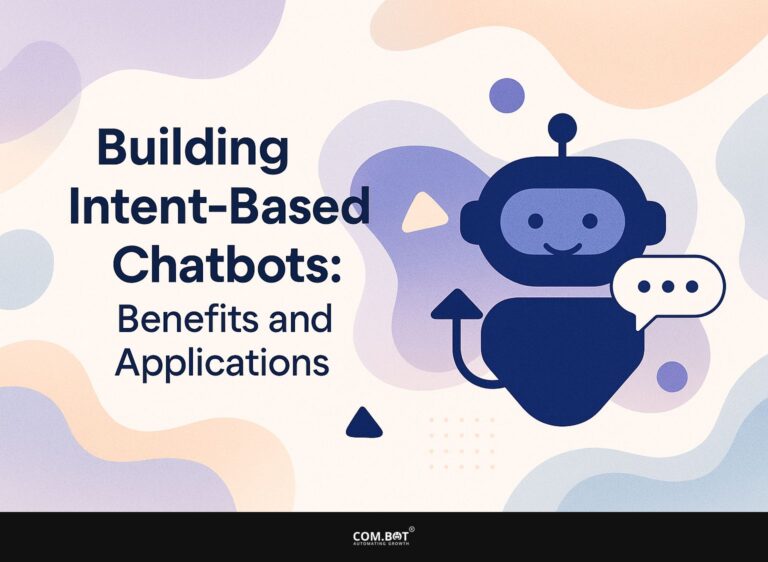Feedback for AI Systems: Importance and Improvement Techniques
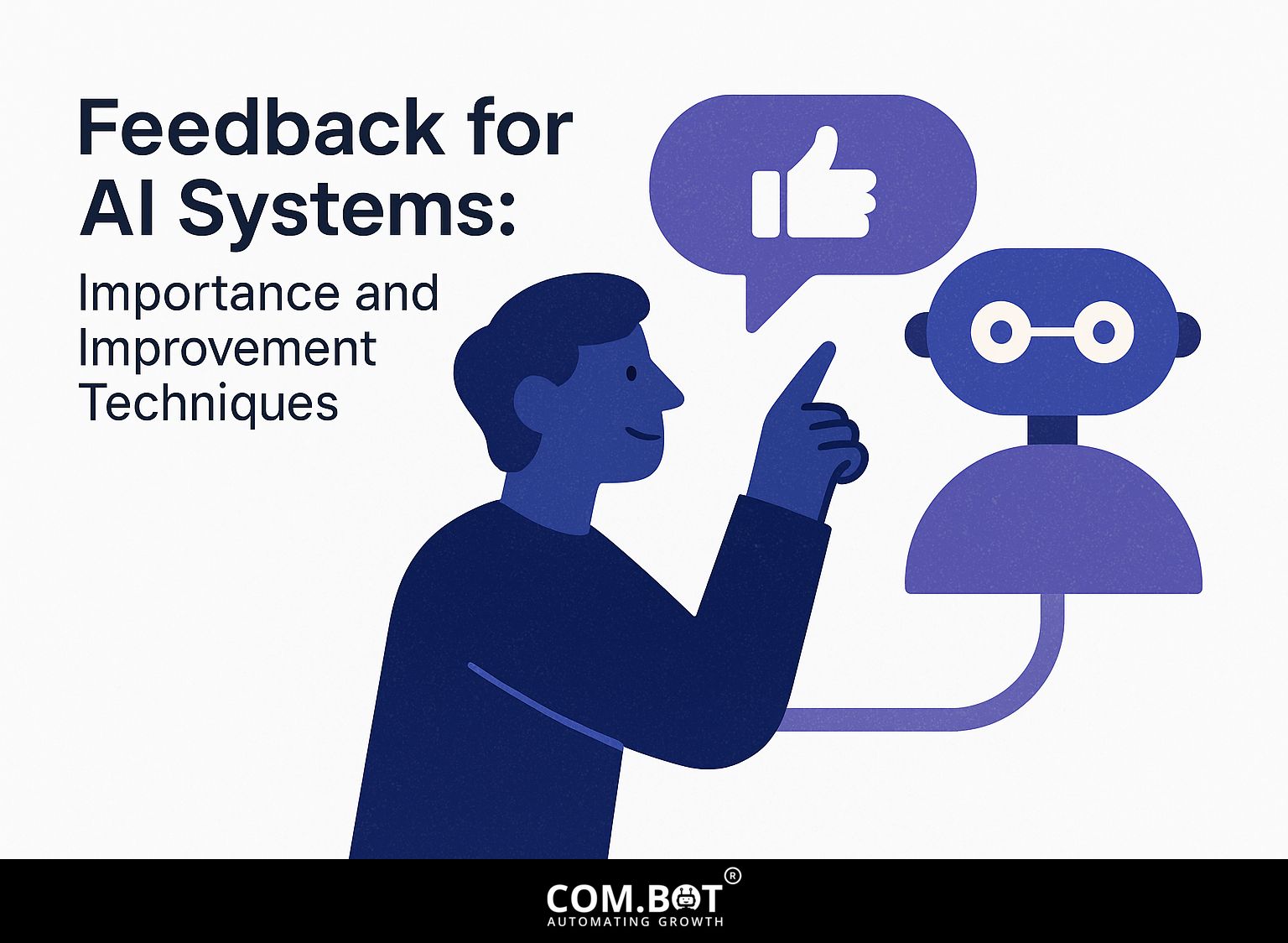
As artificial intelligence becomes more common, human involvement in improving AI systems is more important than before. The AI feedback loop is essential for driving performance improvement, especially in complex applications like self-driving cars. This article discusses the importance of feedback in developing AI and outlines useful methods for using machine learning skills. Learn how organized feedback systems can improve AI’s accuracy and make it more user-friendly, while also dealing with ethical issues.
Key Takeaways:
- Feedback is important for making AI systems more accurate, better for users, and ethically sound.
- There are different ways to collect feedback for AI systems, such as involving people directly or using automatic feedback methods.
- Model training and regular assessment can be used to make the most of feedback for ongoing enhancement of AI systems.
- 1 Importance of Feedback in AI Systems
- 2 AI Feedback Statistics 2024
- 3 AI Feedback Statistics 2024
- 3.1 Market and Economic Impact: Global AI Market Value
- 3.2 Market and Economic Impact: Market Growth Rate
- 3.3 Market and Economic Impact: Economic Contributions
- 3.4 Usage and Awareness: AI Usage Statistics
- 3.5 Job Market and Salaries: AI Job Postings in the US
- 3.6 Job Market and Salaries: AI Salary Statistics
- 3.7 1. Enhancing Model Accuracy
- 3.8 2. Improving User Experience
- 3.9 3. Ensuring Ethical AI Use
- 4 Types of Feedback Mechanisms
- 5 Techniques for Gathering Feedback
- 6 Implementing Feedback for Improvement
- 7 Challenges in Feedback Integration
- 8 Upcoming Trends in AI Feedback Systems
- 9 Frequently Asked Questions
- 9.1 1. What is the importance of feedback for AI systems?
- 9.2 2. How does feedback improve AI systems?
- 9.3 3. What are the different types of feedback for AI systems?
- 9.4 4. Why is continuous feedback important for AI systems?
- 9.5 5. How can we provide effective feedback for AI systems?
- 9.6 6. What are some improvement techniques for AI systems based on feedback?
1. Definition and Purpose
An AI feedback loop is a method where the outcomes from an AI system are used repeatedly to improve the system later. This process improves the system by letting it learn from its errors and achievements.
For example, self-driving cars use feedback loops to examine sensor information and the way drivers act to improve the programs for steering and avoiding obstacles. If the system misunderstands a traffic signal, it adjusts its decisions based on that mistake, gradually becoming safer and more trustworthy.
Recommendation systems, like the ones on Netflix, study user actions to make content suggestions more accurate, improving the user experience over time.
2. Role of Feedback in AI Development
Feedback is important in AI development because it helps algorithms become more accurate and responsive. This happens through both directed and spontaneous feedback systems. In supervised learning, data is labeled, which makes it useful for clear tasks like identifying fraud.
For example, an AI model studies previous transaction records marked as ‘fraud’ or ‘not fraud’, which helps it become better at making correct decisions over time.
Conversely, unsupervised learning relies on patterns in unlabelled data, excelling in anomaly detection scenarios. Here, the algorithm identifies outliers in data sets-such as unusual network traffic-without prior knowledge of what constitutes an anomaly. Both methods are important, each used for different AI tasks and improving system functions.
Importance of Feedback in AI Systems
Good feedback methods are important for improving how well AI systems work in areas like healthcare and finance.
AI Feedback Statistics 2024
For an extensive analysis of AI’s role in enhancing these systems, our in-depth look at AI Bias in Content Moderation delves into examples and mitigation strategies.
AI Feedback Statistics 2024
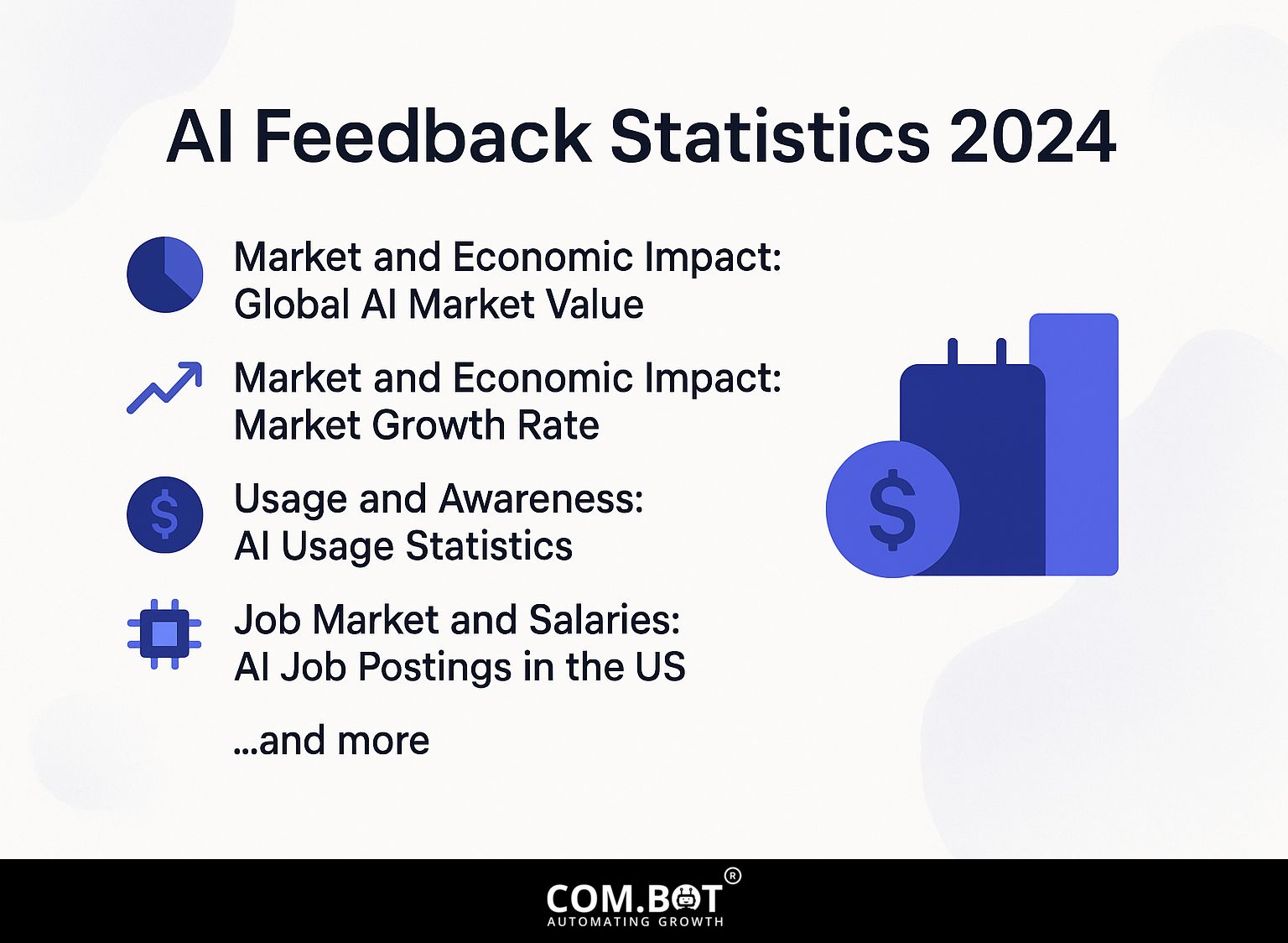
Market and Economic Impact: Global AI Market Value
Market and Economic Impact: Market Growth Rate
Market and Economic Impact: Economic Contributions
Usage and Awareness: AI Usage Statistics
Job Market and Salaries: AI Job Postings in the US
Job Market and Salaries: AI Salary Statistics
The AI Feedback Statistics 2024 present a detailed review of the economic and social effects of artificial intelligence, focusing on market values, growth rates, applications, and the employment sector. This data highlights how AI can significantly change many industries and its increasing impact on the world’s economy.
Market and Economic Impact data reveals significant expansion, with the global AI market valued at $454.12 billion in 2023 and projected to reach $2.5 trillion by 2032. This dramatic increase reflects AI’s integration into diverse industries, driving innovation and efficiency. The anticipated 33% annual growth rate for 2024 and a 19% CAGR from 2022 to 2032 highlight AI’s rapid evolution and adoption.
- Economic Contributions: By 2030, AI is expected to contribute 21% to the US GDP, demonstrating its critical role in economic development. Globally, AI could add $15.7 trillion to the economy by 2030, highlighting its ability to improve productivity and form new networks.
Usage and Awareness statistics show substantial penetration, with 55% of Americans regularly using AI in their daily lives. Furthermore, 56% of businesses use AI for customer service, indicating AI’s role in enhancing customer interactions and operational efficiency.
Job Market and Salaries reflect the demand for AI expertise. In the US, there are 1,898 data engineer jobs and 1,692 data scientist jobs posted, pointing out the demand for experienced workers. The salary data shows lucrative opportunities, with entry-level positions earning a median of $105,092 and executive roles commanding $195,787 This shows how much organizations appreciate knowledge in AI.
The AI Feedback Statistics 2024 AI’s major influence on the economy and its role in society. As AI keeps developing, it will likely play a bigger part in changing industries, making processes better, and having a significant impact on the world economy. This growth will bring both chances and difficulties that will influence the direction of technology.
1. Enhancing Model Accuracy
Incorporating user feedback leads to a measurable increase in model accuracy, often improving it by 20-30% in diverse AI applications.
For example, a healthcare AI diagnostic tool initially achieved 70% accuracy. It used feedback from doctors to make its algorithms better through several updates.
By regularly collecting feedback on incorrect predictions, the tool improved its predictive model, eventually achieving 90% accuracy.
Regular feedback cycles improve how models learn and increase user confidence. Tools such as A/B testing and user surveys are essential for gathering helpful data, ensuring the AI evolves based on real needs.
2. Improving User Experience
Including user feedback can improve satisfaction by 40% because systems become easier to use and better match what users want.
To implement effective feedback integration, consider using tools like Hotjar for user behavior analytics, which records interactions and surveys users post-session.
An e-commerce platform reviewed feedback on product recommendations and changed its algorithms to customize suggestions while considering shifts in user preferences over time. This method resulted in a 25% rise in the rate at which sales were completed.
Frequently updating recommendation systems using user feedback keeps them useful and meets customer needs.
3. Ensuring Ethical AI Use
Ethical issues are very important in AI creation, with feedback systems helping to meet fairness and openness rules. This feedback can be structured through user surveys, community forums, and algorithm audits.
For example, the AI Ethics Guidelines offer ways to evaluate and address bias, encouraging developers to gather feedback from a variety of users during testing.
Tools like FATE (Fairness, Accountability, Transparency in Machine Learning) can help analyze model fairness, while platforms like ModelCards simplify documenting model performance. Using these strategies improves the AI’s ethical standards and builds trust with users and stakeholders.
Types of Feedback Mechanisms
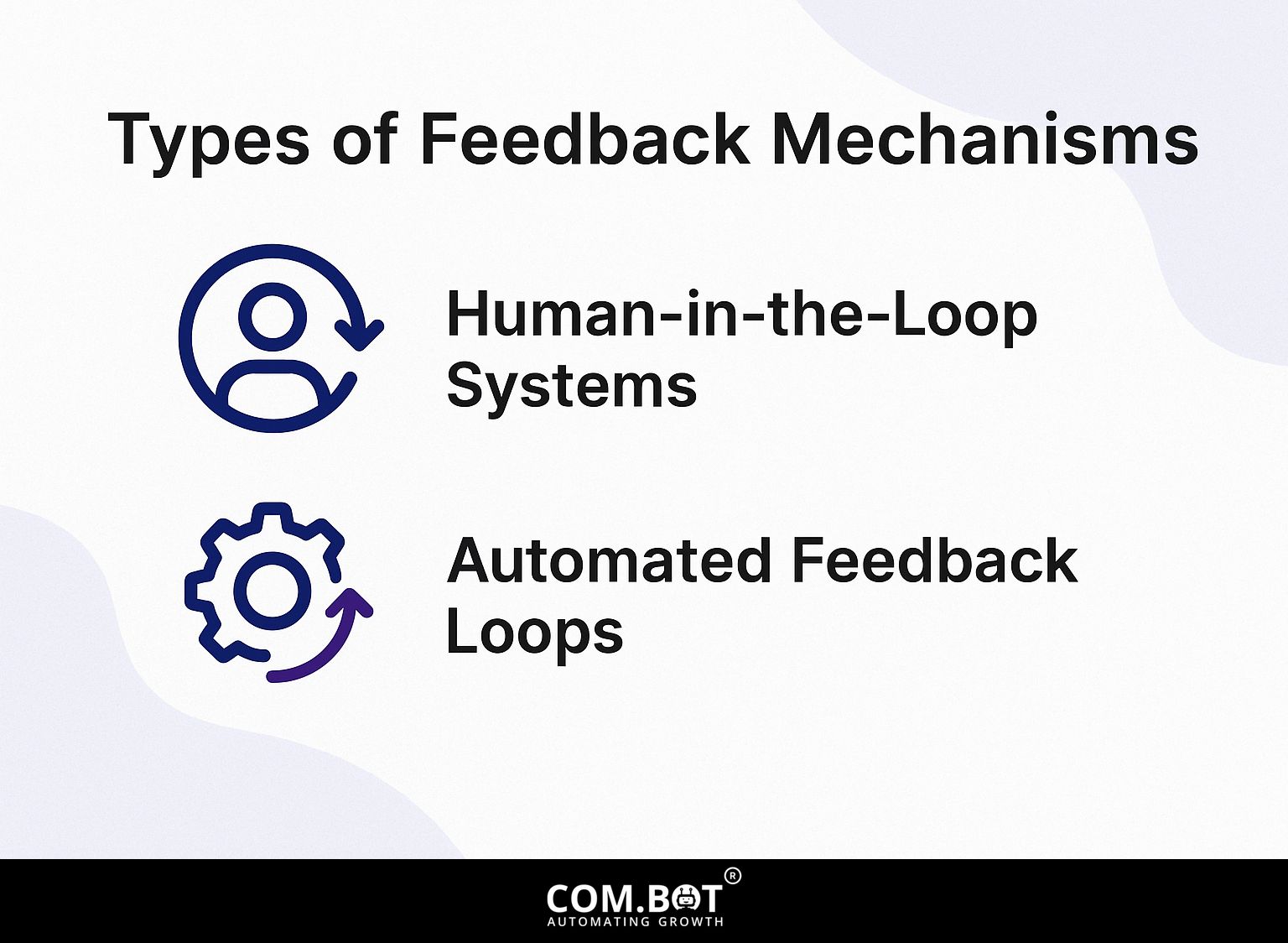
AI systems use different feedback tools, each made to handle certain feedback requirements and usage situations. Those interested in practical applications might find our insights on Interactive AI Buttons: Setup and Use Cases beneficial.
1. Human-in-the-Loop Systems
Human-in-the-loop systems use feedback from people to improve AI model performance, greatly raising the quality of results.
For instance, Amazon employs human reviewers to assess product recommendations, enabling continuous improvement of its algorithms.
By analyzing feedback, they see a 30% rise in conversion rates compared to old methods, as human feedback helps the AI better understand customer preferences.
Tools like AWS SageMaker let businesses set up systems where people check data and offer useful information, creating a process that constantly improves how well the models work. This method improves efficiency and encourages more interaction with users.
2. Automated Feedback Loops
Feedback loops run by machines make it easier to give and receive feedback. This lets AI systems learn and change right away without needing people. These loops function by continuously collecting data from interactions.
For example, in reinforcement learning used in gaming, an AI learns optimal strategies by receiving rewards or penalties based on player behavior.
Platforms such as OpenAI’s Gym offer virtual spaces where AI can practice playing games, receiving immediate responses to improve their strategies. As the AI encounters various strategies, it adjusts its responses, enhancing its gameplay proficiency. This process supports an active way of learning, showing new information and greatly improving overall results.
Techniques for Gathering Feedback
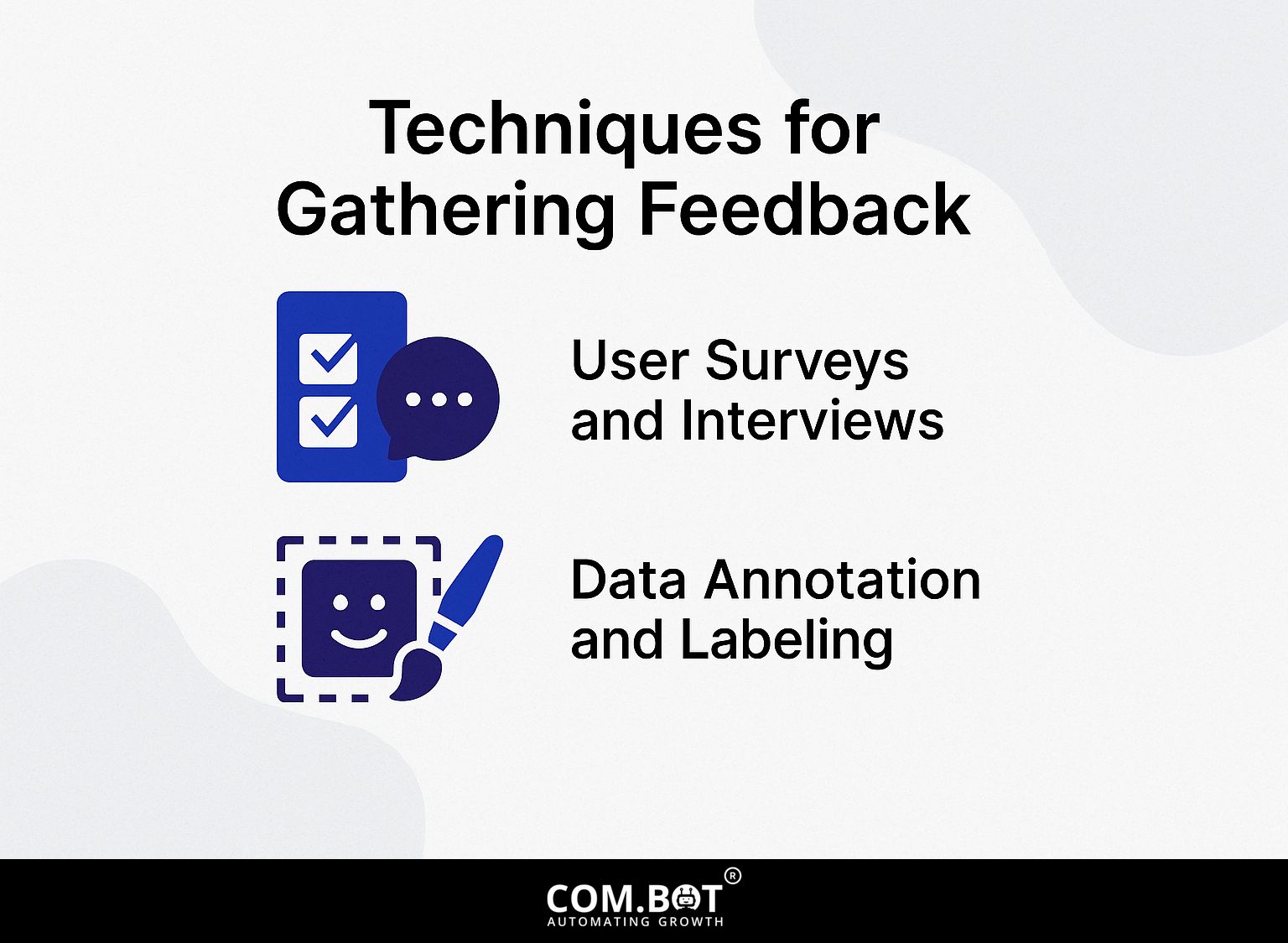
Gathering feedback properly is important for making feedback loops function well in AI systems.
1. User Surveys and Interviews
User surveys and interviews give useful information that can improve AI system performance by identifying user problems and needs.
To create effective surveys, use tools such as SurveyMonkey and Typeform. Both offer simple tools for creating and distributing surveys.
Concentrate on important metrics like Net Promoter Score (NPS) to measure how happy users are, and use open-ended questions to collect detailed feedback.
For interviews, create a clear plan that covers particular subjects such as how easy something is to use and suggestions for new features to gather complete information. Aim for at least 15-20 responses to identify common themes. This method improves your knowledge and increases user interaction, which leads to meaningful changes.
2. Data Annotation and Labeling
Data annotation and labeling are important for training AI models because they make sure the input data is correct and useful.
To facilitate effective data labeling, tools like Label Studio allow teams to annotate various types of data, including images, text, and audio.
For instance, in a computer vision project, annotators can use bounding boxes to highlight objects within images. Alternatively, for text classification, Label Studio provides a user-friendly interface to categorize sentiments or topics.
By using these tools, organizations can improve data quality and simplify workflows, leading to stronger AI models. Using regular practices, such as frequent reviews and feedback processes, improves the accuracy of annotations.
Implementing Feedback for Improvement
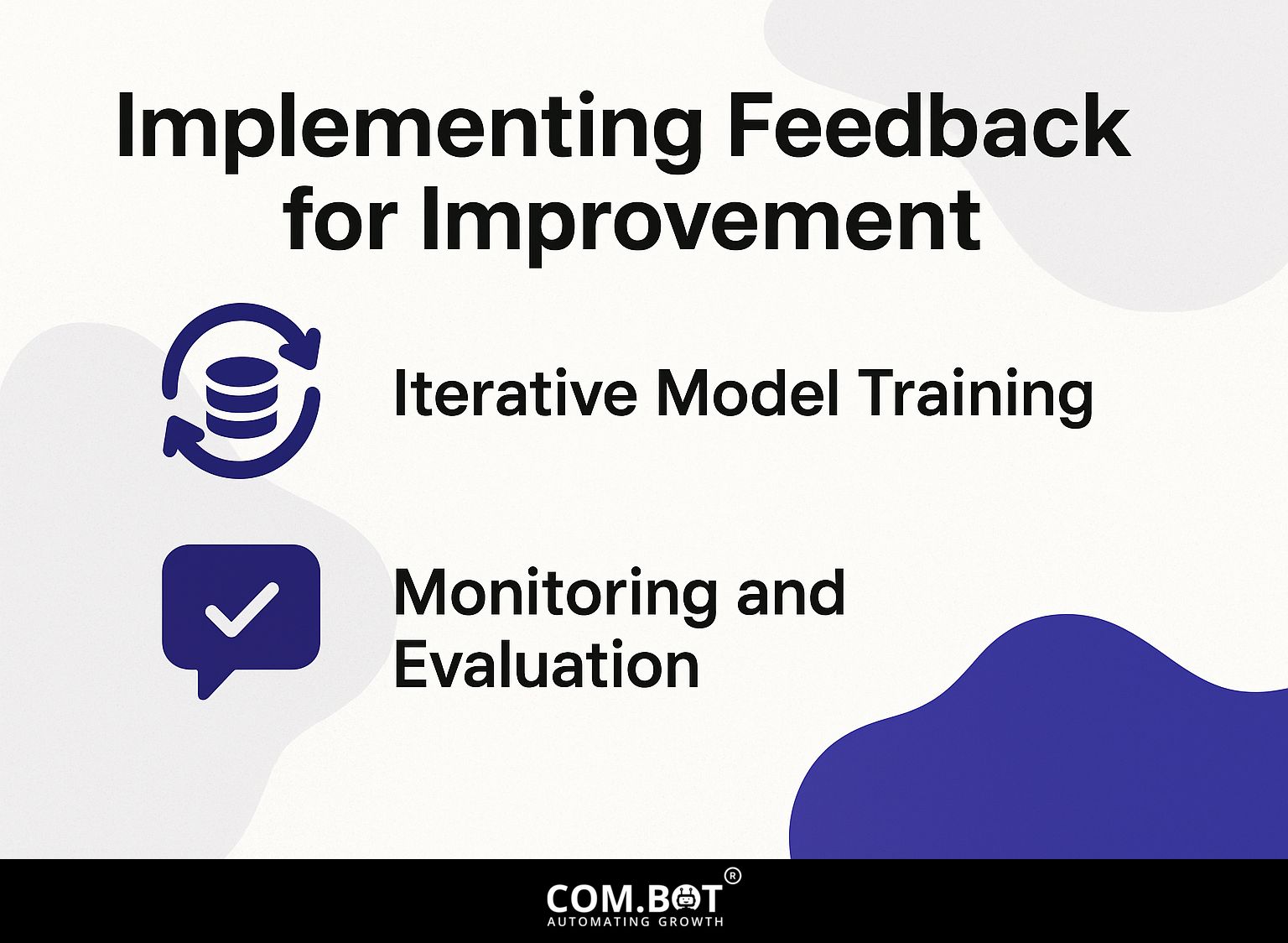
Using feedback needs an organized method to guarantee ongoing progress and proper tracking of AI systems.
1. Iterative Model Training
Repeatedly training models is important to improve AI abilities, allowing new data and feedback to be added into the training process. This process usually includes a few important steps.
- First, gather a dataset that represents new information or scenarios the model hasn’t yet encountered.
- Next, fine-tune the model using this dataset while incorporating performance metrics to evaluate its effectiveness.
- Once the training is complete, put the model into use and watch how it works in actual situations. Gather feedback from users to find out what needs to be improved.
For instance, a company working on a customer service chatbot might examine how users interact with it to update its replies, resulting in higher user satisfaction through regular updates.
2. Monitoring and Evaluation
Monitoring and evaluation are critical components for assessing the effectiveness of feedback mechanisms in AI systems.
To effectively monitor AI systems, consider tools like Prometheus for real-time monitoring and Grafana for data visualization.
- Start by setting up Prometheus to collect and store metrics from your AI applications.
- Then, create Grafana dashboards to visualize data trends, helping you identify anomalies or performance dips.
Regularly evaluate user feedback through surveys or A/B testing to adjust your algorithms based on real-world performance. This method encourages ongoing progress and keeps the feedback process up-to-date.
Challenges in Feedback Integration
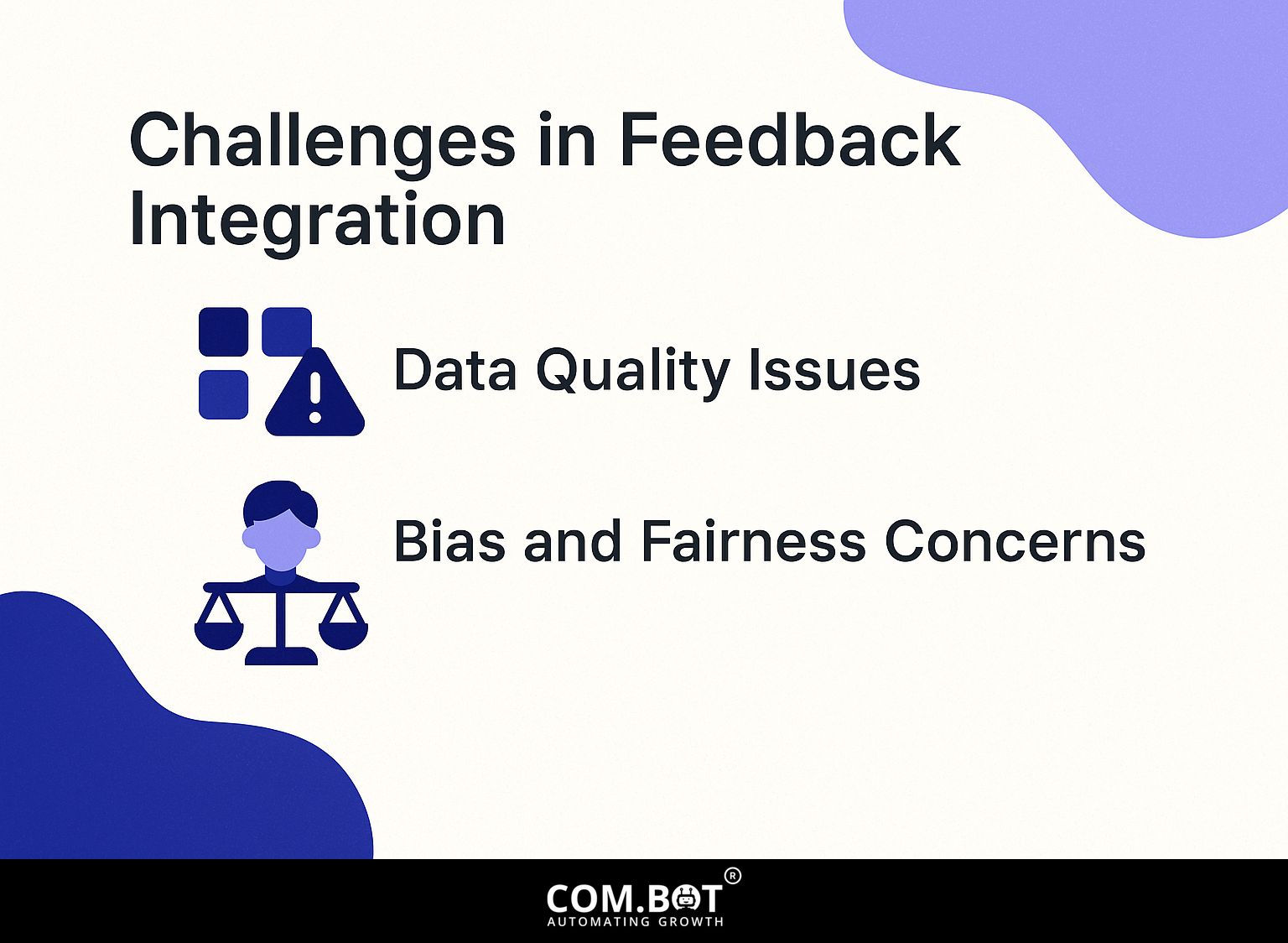
Adding feedback to AI systems can bring about different problems that must be spotted and fixed to make it work well. One approach to improve feedback integration is through enhancing content moderation accuracy, which helps refine AI responses and reduce errors. Learn more about the improvements in content moderation accuracy that can contribute to more effective AI feedback systems.
1. Data Quality Issues
Problems with data, like missing or wrong information, can greatly affect how well AI systems work and how dependable they are. To address these challenges, implement data validation tools like Talend or Alteryx, which help identify and correct errors.
Establish standard operating procedures for data entry to minimize inconsistencies. Regular checks with tools like Apache Nifi can keep data quality standards in line.
For example, a retail company increased its inventory accuracy by 30% after using automatic data cleaning processes, greatly improving how it runs.
By focusing on correct data and creating a sense of responsibility, organizations can greatly improve how well their AI systems work.
2. Bias and Fairness Concerns
Bias and fairness concerns are critical issues in AI systems that must be mitigated through thoughtful feedback integration.
Implementing feedback mechanisms can effectively reduce bias in AI outputs. For example, companies like IBM and Microsoft have used a variety of training datasets to better represent real-world situations.
Regular audits on model predictions, followed by gathering feedback from end-users, can highlight bias areas. For example, Microsoft improved their image recognition models after receiving community feedback about misattributions.
Similarly, organizations can use open-source tools like Fairness Indicators to check fairness metrics in advance. This helps teams to make changes to algorithms step by step and improve overall reliability.
Upcoming Trends in AI Feedback Systems
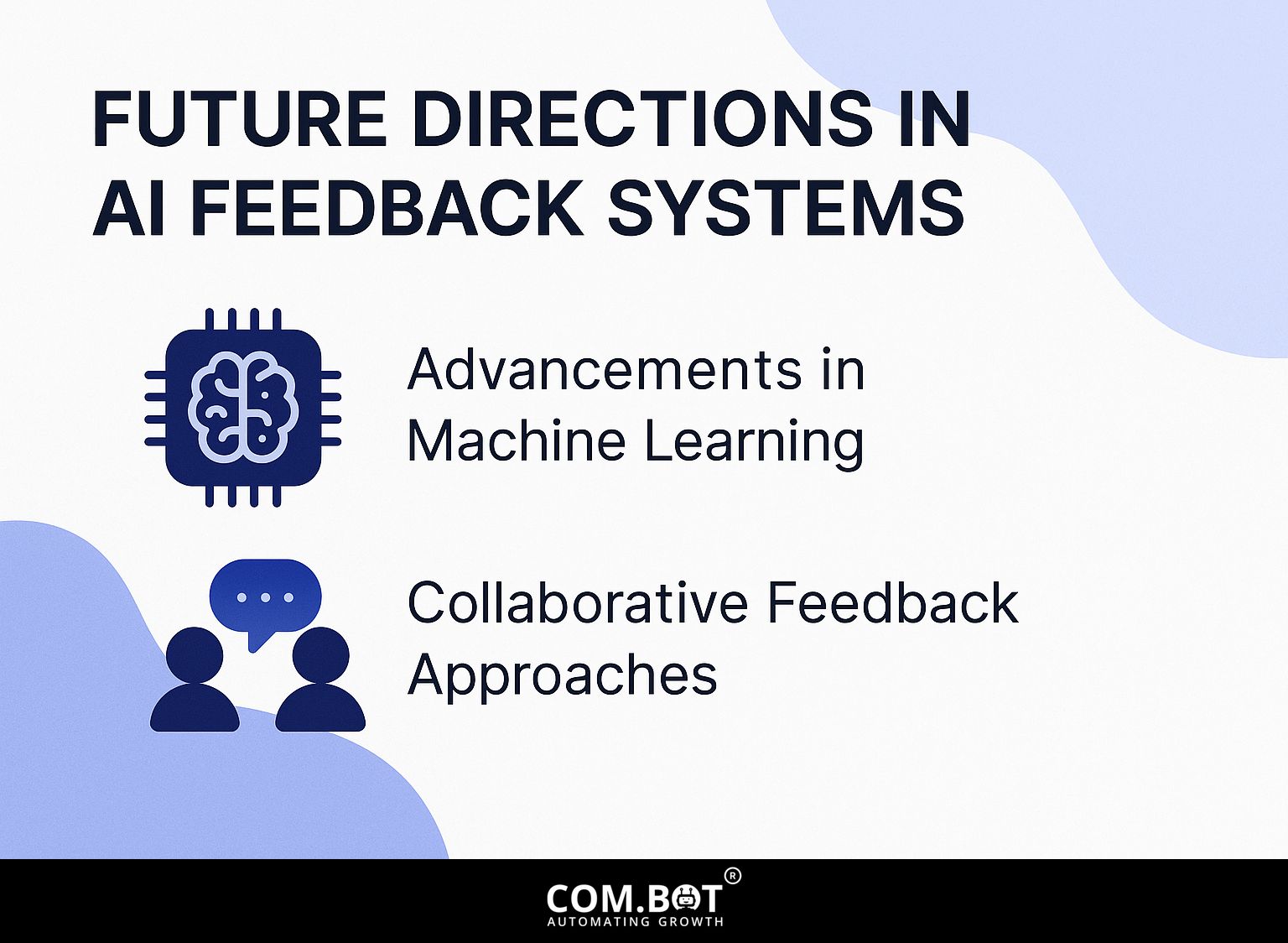
AI feedback systems are rapidly getting better, concentrating on developments that improve performance and user interaction. This evolution is particularly evident in the realm of customer support, where AI Bots for Customer Support are enhancing satisfaction and efficiency.
1. Advancements in Machine Learning
Recent advancements in machine learning technologies are reshaping how feedback is integrated into AI systems for superior performance.
For example, companies like Google are using better reinforcement learning methods to improve how users interact with their search engines.
At the same time, OpenAI uses advanced neural networks such as transformers to make language models better based on detailed user feedback. These innovations let AI systems change quickly, learn from mistakes, and improve responses.
By using these advanced machine learning methods in feedback systems, companies see more satisfied and involved users, showing clear benefits.
2. Collaborative Feedback Approaches
Working together, people and AI combine their strengths to provide more detailed and useful feedback. To implement effective collaborative feedback systems, consider using tools like Miro for interactive brainstorming sessions, or Google Docs for real-time document collaboration.
Another excellent tool is Loom, which enables team members to provide video feedback, adding a personal touch to critiques.
For instance, companies like Atlassian successfully use Confluence for gathering team input on project progress, allowing for transparent communication. These methods make everyone feel valued and lead to improved results and stronger teamwork.
Frequently Asked Questions
1. What is the importance of feedback for AI systems?
Feedback is essential for AI systems because it allows them to learn and improve their performance. Just like humans, AI systems need feedback to understand how well they are performing and make necessary adjustments to their algorithms.
2. How does feedback improve AI systems?
Feedback helps AI systems find and fix mistakes, resulting in better and faster decision-making. It also lets them adjust to new data and make better predictions and results.
3. What are the different types of feedback for AI systems?
The three main types of feedback for AI systems are supervised, unsupervised, and reinforcement. Supervised feedback uses labeled data to teach the system, unsupervised feedback allows the system to learn by itself with unlabelled data, and reinforcement feedback gives rewards or penalties to influence the system’s choices.
4. Why is continuous feedback important for AI systems?
Ongoing feedback is important for AI systems as it helps them change and get better promptly. It lets the system learn from new data and change its algorithms to stay current and correct.
5. How can we provide effective feedback for AI systems?
To give useful feedback, we need to make sure the data is correct, important, and directly related to the system’s learning goals. The feedback should be given promptly and concentrate on specific areas that need improvement, rather than general comments.
6. What are some improvement techniques for AI systems based on feedback?
Some ways to make AI systems better using feedback include retraining the system with new data, changing its algorithms, and adding new features or tools to improve its performance. Looking at feedback and finding trends can show where things can be made better.

